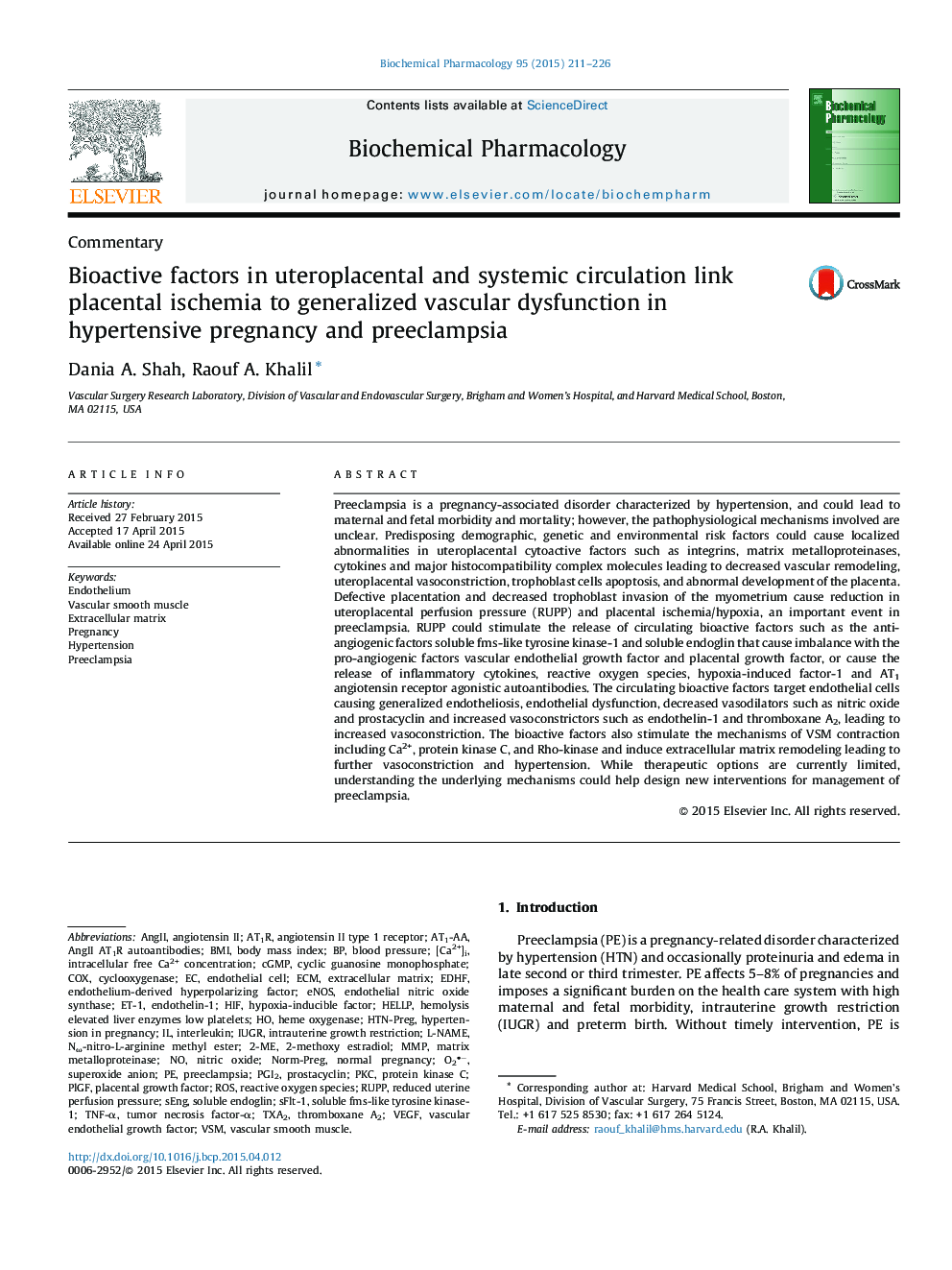| Article ID | Journal | Published Year | Pages | File Type |
|---|---|---|---|---|
| 2512108 | Biochemical Pharmacology | 2015 | 16 Pages |
Preeclampsia is a pregnancy-associated disorder characterized by hypertension, and could lead to maternal and fetal morbidity and mortality; however, the pathophysiological mechanisms involved are unclear. Predisposing demographic, genetic and environmental risk factors could cause localized abnormalities in uteroplacental cytoactive factors such as integrins, matrix metalloproteinases, cytokines and major histocompatibility complex molecules leading to decreased vascular remodeling, uteroplacental vasoconstriction, trophoblast cells apoptosis, and abnormal development of the placenta. Defective placentation and decreased trophoblast invasion of the myometrium cause reduction in uteroplacental perfusion pressure (RUPP) and placental ischemia/hypoxia, an important event in preeclampsia. RUPP could stimulate the release of circulating bioactive factors such as the anti-angiogenic factors soluble fms-like tyrosine kinase-1 and soluble endoglin that cause imbalance with the pro-angiogenic factors vascular endothelial growth factor and placental growth factor, or cause the release of inflammatory cytokines, reactive oxygen species, hypoxia-induced factor-1 and AT1 angiotensin receptor agonistic autoantibodies. The circulating bioactive factors target endothelial cells causing generalized endotheliosis, endothelial dysfunction, decreased vasodilators such as nitric oxide and prostacyclin and increased vasoconstrictors such as endothelin-1 and thromboxane A2, leading to increased vasoconstriction. The bioactive factors also stimulate the mechanisms of VSM contraction including Ca2+, protein kinase C, and Rho-kinase and induce extracellular matrix remodeling leading to further vasoconstriction and hypertension. While therapeutic options are currently limited, understanding the underlying mechanisms could help design new interventions for management of preeclampsia.
Graphical abstractFigure optionsDownload full-size imageDownload as PowerPoint slide
